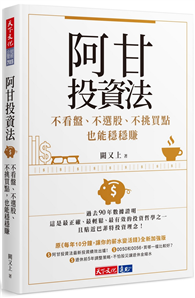Cecchetti& Schoenholtz's Money, Banking, and Financial Markets 6estays relevant and interesting through the product's unique emphasis on theFive Core Principles, the early introduction of risk, an integrated globalperspective, and the integration of FRED data in both the text and problemmaterial. By focusing on the big picture via core principles, Cecchetti teachesstudents the rationale for financial rules and institutional structure so thateven when the financial system evolves, students' knowledge will not be out ofdate. Be sure to visit the author blog at www.moneyandbanking.com for short, informed discussions onissues in the news, as well as technical points relevant for instructors andstudents alike.
ConnectEconomics: McGraw-Hill's online assignment and assessment tool. Cecchettipaired with Connect Economics provides assignable, auto-gradable versions ofend-of-chapter problems in static and algorithmic format, as well as test bankcontent and graphing problems. Students receive detailed step-by-step feedbackon assignments and assignable content is fully integrated with the eBook.Students are also able to search, highlight, and take notes within theReadAnywhere eBook and complete SmartBook 2.0 assignments offline. Connectprovides instructors with powerful reporting tools allowing them to plan,track, and analyze student performance across learning outcomes.
| FindBook |
有 1 項符合
Money, Banking, and Financial Markets (6版)的圖書 |
 |
Money, Banking, and Financial Markets (6版) 作者:Stephen G. Cecchetti、Kermit L. Schoenholtz 出版社:華泰文化 出版日期:2020-05-27 語言:英文 規格:平裝 / 672頁 / 20.1 x 25.4 x 2.2 cm / 普通級 / 全彩印刷 / 6版 |
| 圖書館借閱 |
| 國家圖書館 | 全國圖書書目資訊網 | 國立公共資訊圖書館 | 電子書服務平台 | MetaCat 跨館整合查詢 |
| 臺北市立圖書館 | 新北市立圖書館 | 基隆市公共圖書館 | 桃園市立圖書館 | 新竹縣公共圖書館 |
| 苗栗縣立圖書館 | 臺中市立圖書館 | 彰化縣公共圖書館 | 南投縣文化局 | 雲林縣公共圖書館 |
| 嘉義縣圖書館 | 臺南市立圖書館 | 高雄市立圖書館 | 屏東縣公共圖書館 | 宜蘭縣公共圖書館 |
| 花蓮縣文化局 | 臺東縣文化處 |
|
|
圖書介紹 - 資料來源:博客來 評分:
圖書名稱:Money, Banking, and Financial Markets (6版)
內容簡介
作者介紹
作者簡介
Stephen G. Cecchetti
現職:Brandeis International Business School
Kermit L. Schoenholtz
現職:New York University
Stephen G. Cecchetti
現職:Brandeis International Business School
Kermit L. Schoenholtz
現職:New York University
目錄
PART I: MONEY AND THE FINANCIAL SYSTEM
Ch 1 An Introduction to Money and the Financial System
Ch 2 Money and the Payments System
Ch 3 Financial Instruments, Financial Markets, and Financial Institutions
PART II: INTEREST RATES, FINANCIAL INSTRUMENTS, AND FINANCIAL MARKETS
Ch 4 Future Value, Present Value, and Interest Rates
Ch 5 Understanding Risk
Ch 6 Bonds, Bond Prices, and the Determination of Interest Rates
Ch 7 The Risk and Term Structure of Interest Rates
Ch 8 Stocks, Stock Markets, and Market Efficiency
Ch 9 Derivatives: Futures, Options, and Swaps
Ch10 Foreign Exchange
PART III: FINANCIAL INSTITUTIONS
Ch11 The Economics of Financial Intermediation
Ch12 Depository Institutions: Banks and Bank Management
Ch13 Financial Industry Structure
Ch14 Regulating the Financial System
PART IV: CENTRAL BANKS, MONETARY POLICY, AND FINANCIAL STABILITY
Ch15 Central Banks in the World Today
Ch16 The Structure of Central Banks: The Federal Reserve and the European Central Bank
Ch17 The Central Bank Balance Sheet and the Money Supply Process
Ch18 Monetary Policy: Stabilizing the Domestic Economy
Ch19 Exchange Rate Policy and the Central Bank
PART V: MODERN MONETARY ECONOMICS
Ch20 Money Growth, Money Demand, and Modern Monetary Policy
Ch21 Output, Inflation, and Monetary Policy
Ch22 Understanding Business Cycle Fluctuations
Ch23 Modern Monetary Policy and the Challenges Facing Central Bankers
Ch 1 An Introduction to Money and the Financial System
Ch 2 Money and the Payments System
Ch 3 Financial Instruments, Financial Markets, and Financial Institutions
PART II: INTEREST RATES, FINANCIAL INSTRUMENTS, AND FINANCIAL MARKETS
Ch 4 Future Value, Present Value, and Interest Rates
Ch 5 Understanding Risk
Ch 6 Bonds, Bond Prices, and the Determination of Interest Rates
Ch 7 The Risk and Term Structure of Interest Rates
Ch 8 Stocks, Stock Markets, and Market Efficiency
Ch 9 Derivatives: Futures, Options, and Swaps
Ch10 Foreign Exchange
PART III: FINANCIAL INSTITUTIONS
Ch11 The Economics of Financial Intermediation
Ch12 Depository Institutions: Banks and Bank Management
Ch13 Financial Industry Structure
Ch14 Regulating the Financial System
PART IV: CENTRAL BANKS, MONETARY POLICY, AND FINANCIAL STABILITY
Ch15 Central Banks in the World Today
Ch16 The Structure of Central Banks: The Federal Reserve and the European Central Bank
Ch17 The Central Bank Balance Sheet and the Money Supply Process
Ch18 Monetary Policy: Stabilizing the Domestic Economy
Ch19 Exchange Rate Policy and the Central Bank
PART V: MODERN MONETARY ECONOMICS
Ch20 Money Growth, Money Demand, and Modern Monetary Policy
Ch21 Output, Inflation, and Monetary Policy
Ch22 Understanding Business Cycle Fluctuations
Ch23 Modern Monetary Policy and the Challenges Facing Central Bankers
|










